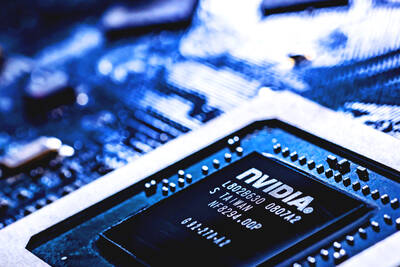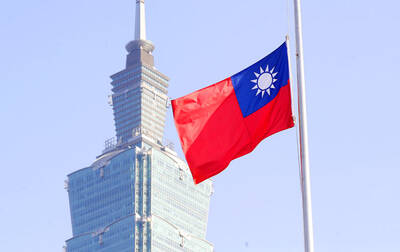This year’s Computex Taipei is expected to help participating companies seal business deals worth more than US$20 billion — the figure achieved at last year’s fair, the show organizer said yesterday.
“We expect Computex to create more business dollars this year, as a number of new products will be showcased at the fair,” Moses Yen (顏木松), executive director of the exhibition department of Taiwan External Trade Development Council (TAITRA, 外貿協會), told a press conference.
Computex is the world’s second-largest IT tradeshow after Germany’s CeBIT. At last year’s event, nearly US$700 million in deals were sealed during one-on-one procurement meetings, and the whole trade fair helped conclude trade deals totaling US$20 billion, Yen said.
Fifty more companies and 205 more booths have been reserved for this year’s event, which will be held from June 1 to June 5 at the Taipei World Trade Center. The number of companies participating is 1,750 with 4,700 booths, TAITRA said.
It is expected to attract a record-breaking 35,000-plus international buyers, it said.
Into its 30th year, Computex will hold more than 100 conferences and forums. E-reading will be discussed at the “E-book Industry Trend and Design Forum,” while the “3D Technology and Design Forum” will focus on the technology’s latest developments. Cloud computing will also be featured in a forum.

When Lika Megreladze was a child, life in her native western Georgian region of Guria revolved around tea. Her mother worked for decades as a scientist at the Soviet Union’s Institute of Tea and Subtropical Crops in the village of Anaseuli, Georgia, perfecting cultivation methods for a Georgian tea industry that supplied the bulk of the vast communist state’s brews. “When I was a child, this was only my mum’s workplace. Only later I realized that it was something big,” she said. Now, the institute lies abandoned. Yellowed papers are strewn around its decaying corridors, and a statue of Soviet founder Vladimir Lenin

UNIFYING OPPOSITION: Numerous companies have registered complaints over the potential levies, bringing together rival automakers in voicing their reservations US President Donald Trump is readying plans for industry-specific tariffs to kick in alongside his country-by-country duties in two weeks, ramping up his push to reshape the US’ standing in the global trading system by penalizing purchases from abroad. Administration officials could release details of Trump’s planned 50 percent duty on copper in the days before they are set to take effect on Friday next week, a person familiar with the matter said. That is the same date Trump’s “reciprocal” levies on products from more than 100 nations are slated to begin. Trump on Tuesday said that he is likely to impose tariffs

HELPING HAND: Approving the sale of H20s could give China the edge it needs to capture market share and become the global standard, a US representative said The US President Donald Trump administration’s decision allowing Nvidia Corp to resume shipments of its H20 artificial intelligence (AI) chips to China risks bolstering Beijing’s military capabilities and expanding its capacity to compete with the US, the head of the US House Select Committee on Strategic Competition Between the United States and the Chinese Communist Party said. “The H20, which is a cost-effective and powerful AI inference chip, far surpasses China’s indigenous capability and would therefore provide a substantial increase to China’s AI development,” committee chairman John Moolenaar, a Michigan Republican, said on Friday in a letter to US Secretary of

ELECTRONICS BOOST: A predicted surge in exports would likely be driven by ICT products, exports of which have soared 84.7 percent from a year earlier, DBS said DBS Bank Ltd (星展銀行) yesterday raised its GDP growth forecast for Taiwan this year to 4 percent from 3 percent, citing robust demand for artificial intelligence (AI)-related exports and accelerated shipment activity, which are expected to offset potential headwinds from US tariffs. “Our GDP growth forecast for 2025 is revised up to 4 percent from 3 percent to reflect front-loaded exports and strong AI demand,” Singapore-based DBS senior economist Ma Tieying (馬鐵英) said in an online briefing. Taiwan’s second-quarter performance beat expectations, with GDP growth likely surpassing 5 percent, driven by a 34.1 percent year-on-year increase in exports, Ma said, citing government